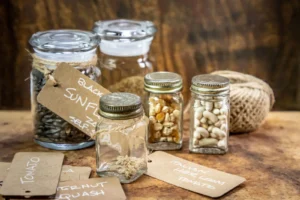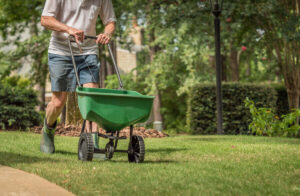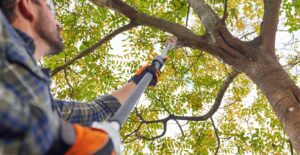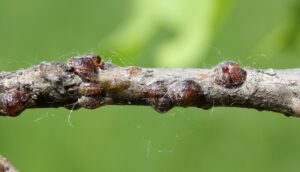As the crisp fall air brings colorful foliage to our yards, it also brings the inevitable task of leaf disposal. While it may seem tempting to rake up the leaves and pile them for a quick burn, there are several eco-friendly and legal alternatives that are much better for the environment and your community. As landscape expert David Greenfield points out, “Improper leaf disposal can cause harm to the environment, leading to pollution and even local flooding. There are many better ways to dispose of leaves that benefit your lawn and the planet.”
In this article, we’ll explore six responsible and efficient ways to dispose of your fall leaves, ensuring your yard stays clean and healthy without causing harm to the environment.
1. Composting Leaves for a Healthier Lawn
One of the best and most environmentally friendly ways to dispose of your leaves is by composting them. Leaves are an excellent source of carbon in the composting process, providing nutrients that enrich the soil in your garden. When combined with nitrogen-rich materials like grass clippings, fruit and vegetable scraps, or coffee grounds, leaves break down into nutrient-dense compost that can improve soil structure and help your plants thrive.
How to Compost Leaves:
- Shred the leaves: Shredding leaves helps them break down faster. You can use a leaf shredder, a lawn mower with a mulching attachment, or even a rake to manually crush the leaves.
- Create layers: Add leaves in layers to your compost pile, alternating with green materials like grass clippings or food scraps. This balance of carbon and nitrogen is crucial for successful composting.
- Keep it moist: Ensure your compost pile stays moist, but not too wet. Add water as needed to maintain the right consistency.
Benefits: Composting leaves reduces landfill waste, creates valuable organic matter for your garden, and helps retain moisture in the soil.
2. Mulch Your Leaves for Lawn and Garden Benefits
Instead of bagging up your leaves, why not mulch them directly onto your lawn or garden beds? Mulching is an excellent way to recycle the leaves right on your property while providing several benefits. When you mulch leaves, you chop them into small pieces, allowing them to decompose quickly, returning nutrients to the soil and preventing weed growth.
How to Mulch Leaves:
- Use a mulching mower: A mulching mower or a lawnmower with a mulching blade will break leaves into small bits and distribute them evenly over your lawn. Aim for a thin, even layer to avoid suffocating the grass.
- Apply around garden beds: You can also mulch leaves and spread them around plants or vegetable beds. This will act as a natural weed deterrent and retain moisture in the soil.
Benefits: Mulching leaves helps your lawn stay healthy, prevents soil erosion, and reduces the need for synthetic fertilizers.
3. Take Advantage of Local Leaf Pickup Services
Many local municipalities offer leaf pickup services during the fall season, making it easy to dispose of large quantities of leaves without hassle. These services often collect leaves from the curbside and may either compost or recycle the material. Check with your local waste management department to see if curbside leaf pickup is available in your area.
How it Works:
- Place leaves in bags or raked piles at the curb by the designated pickup date.
- Follow specific instructions on how to bag or stack leaves (some areas may require biodegradable bags, while others may allow loose piles).
Benefits: This is an easy, hassle-free method to get rid of leaves, especially for larger yards or those with limited space for composting or mulching.
4. Donate Leaves to Community Gardens or Farms
If you’re looking for a way to recycle your leaves and support the community, consider donating them to local community gardens, urban farms, or schools that use them for composting. Many gardeners appreciate leaves for their rich carbon content, which helps balance the nitrogen-rich materials in their compost piles.
How to Donate Leaves:
- Contact local community organizations: Reach out to local farms, community gardens, or schools to see if they accept leaf donations.
- Ask about collection or drop-off points: Some organizations may offer to pick up your leaves, or you may need to drop them off at a designated location.
Benefits: Donating leaves helps reduce waste, provides local gardeners with valuable composting materials, and strengthens community sustainability.
5. Use a Leaf Vacuum or Blower for Quick Cleanup
If you’re looking for a more efficient way to collect large volumes of leaves, consider using a leaf vacuum or blower. These tools can quickly gather leaves from hard-to-reach areas like flower beds, along walkways, and around shrubs. Once collected, you can use the leaves in a variety of ways, including mulching, composting, or even donating.
How to Use Leaf Vacuum/Blower:
- Vacuum the leaves directly into a bag or container for easy disposal. Some models also shred the leaves as they collect them, which can be useful for mulching or composting.
- Blow leaves into piles for easier collection, or use the blower to direct leaves into a compost bin or mulching pile.
Benefits: These tools save time and effort, especially if you have a large yard or many trees. They make it easier to gather leaves without bending over or using a rake.
6. Avoid Burning Leaves and Use Eco-Friendly Alternatives
While burning leaves may seem like a quick and simple solution, it’s illegal in many areas due to the health and environmental risks it poses. Burning leaves contributes to air pollution and can be hazardous to your health, especially for individuals with respiratory conditions. Many communities have banned leaf burning altogether due to these concerns.
Alternatives to Burning:
- Shred and compost the leaves instead of burning them.
- Mulch leaves directly onto the lawn to recycle the nutrients back into the soil.
- Check with local authorities if leaf burning is allowed in your area; even if it’s permitted, be mindful of local regulations.
Benefits: By avoiding leaf burning, you help reduce air pollution, protect your health, and comply with local regulations.
Conclusion: Responsible Leaf Disposal for a Greener Fall
Managing fallen leaves during the autumn season doesn’t have to be a burden. By using the methods mentioned above—composting, mulching, utilizing local leaf pickup services, or donating leaves—you’re not only cleaning up your yard but also making a positive impact on the environment. Leaf burning may seem like an easy solution, but it’s crucial to choose methods that contribute to sustainability and protect your community.
By following these six tips, you’ll ensure that your yard stays beautiful and your environmental footprint remains small. Whether you’re mulching your leaves, composting them, or donating them to a community garden, there are plenty of responsible ways to dispose of your leaves this fall.
For more information on sustainable leaf disposal practices, visit EPA’s Yard Waste Disposal Guidelines.






